Thrilling Adventure Through The Gobi Desert Of Mongolia
Imagine a land where ancient trade routes weave through vast expanses of golden sand dunes, where the echoes of history resonate in the arid air, and where the relentless spirit of nature thrives against the odds. Welcome to the Gobi Desert, an enigmatic realm that straddles Mongolia and northern China. This captivating desert, one of the world's largest, is not just a barren wasteland but a mosaic of striking landscapes, rich cultural heritage, and extraordinary biodiversity. Whether you are an adventurer seeking the thrill of untamed wilderness or a culture enthusiast eager to delve into nomadic traditions, the Gobi Desert promises an unforgettable journey. Join Tweet Tours on our expedition to Mongolia as we uncover the mysteries and marvels of this enchanting destination.
Mongolia
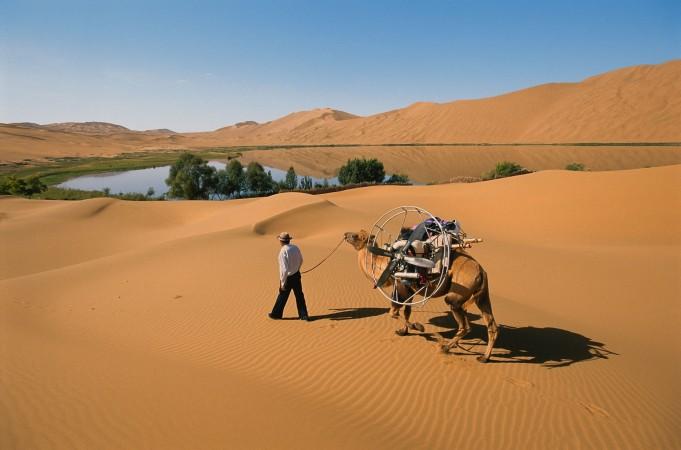
What Do We Know About the Gobi Desert?
Geographical Overview
The Gobi Desert spans over 1,295,000 square kilometers, making it the sixth-largest desert in the world and the second-largest in Asia. Contrary to popular belief, the Gobi is not entirely composed of sand dunes; its terrain is diverse, featuring mountains, steppes, and rocky landscapes. The desert's unique geography is shaped by its harsh climate, with temperatures ranging from scorching summer heat to freezing winter cold.
Historical and Cultural Significance
The Gobi Desert has long been a crossroads of cultures and civilizations. It was an essential component of the historic Silk Road, a trading route that linked China to the Mediterranean. Caravans laden with silk, spices, and other goods traversed its vast expanses, fostering cultural exchange and economic prosperity. Roy Chapman Andrews, an American explorer often regarded as the basis for Indiana Jones, undertook multiple journeys into the Gobi in the early twentieth century. His team made groundbreaking discoveries, including the first-known dinosaur eggs, which sparked global fascination with the region's prehistoric treasures.
The nomadic people of the Gobi have adapted to its challenging environment for centuries. Their traditional way of life, characterized by herding livestock and living in portable gers (yurts), remains largely unchanged. As you explore the Gobi, you'll encounter the warm hospitality and rich traditions of its inhabitants, who embody the resilience and spirit of the desert.
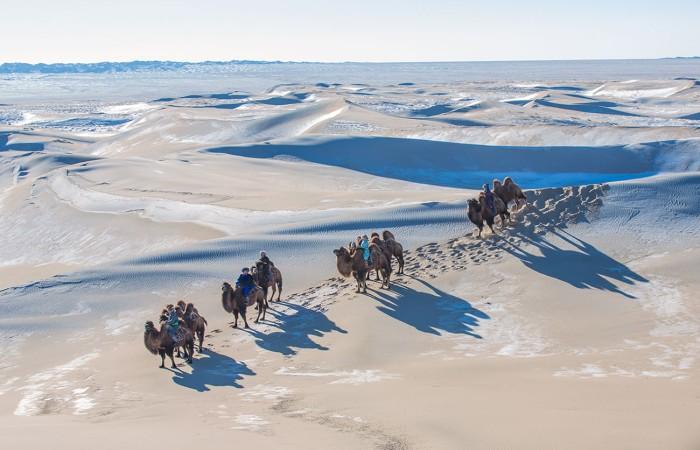
Camel Tour in Gobi Desert - © Photos Mongolia
Top Attractions in the Gobi Desert
Gobi Gurvansaikhan National Park
Gobi Gurvansaikhan National Park, named after the "Three Beauties of the Gobi" mountain range, is a haven for nature lovers and adventurers. The park's diverse ecosystems support a variety of wildlife, including the elusive snow leopard, the Gobi bear, and the wild Bactrian camel.
Key Attractions:
- Gurvan Saikhan Mountains: These rugged peaks offer stunning vistas and challenging hiking trails. The mountains are home to numerous rare plant species and provide a critical habitat for wildlife.
- Yolyn Am (Yol Valley): Known for its dramatic ice field that persists throughout the year, Yol Valley is a striking gorge that offers a unique hiking experience. As you traverse the valley, you'll be awed by the contrast of ice against the desert's backdrop.
Best Times to Visit:
The ideal time to explore Gobi Gurvansaikhan National Park is from June to September when the weather is more temperate, and the flora is in full bloom.
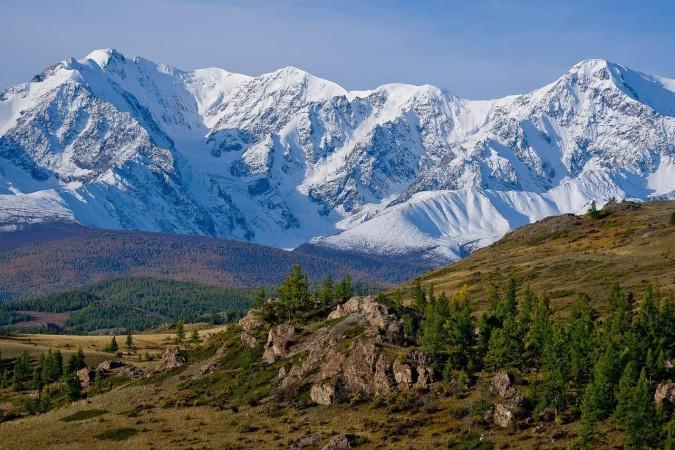
Gobi Gurvansaikhan National Park - © gather
Hongor Els (Singing Sands)
Hongor Els, also known as the Singing Sands, is one of the most iconic features of the Gobi Desert. These immense sand dunes stretch for over 180 kilometers and can reach heights of up to 300 meters.
Unique Features:
The dunes are famous for the musical sound they produce when the wind blows or when the sand shifts. This phenomenon, caused by the movement of sand grains, creates a hauntingly beautiful melody that has captivated visitors for centuries.
Featured Activities:
- Sandboarding: Adventurers can glide down the dunes on sandboards, experiencing the thrill of this unique sport.
- Camel Rides: Embark on a camel trek across the dunes, guided by local herders who share their knowledge of the desert and its inhabitants.
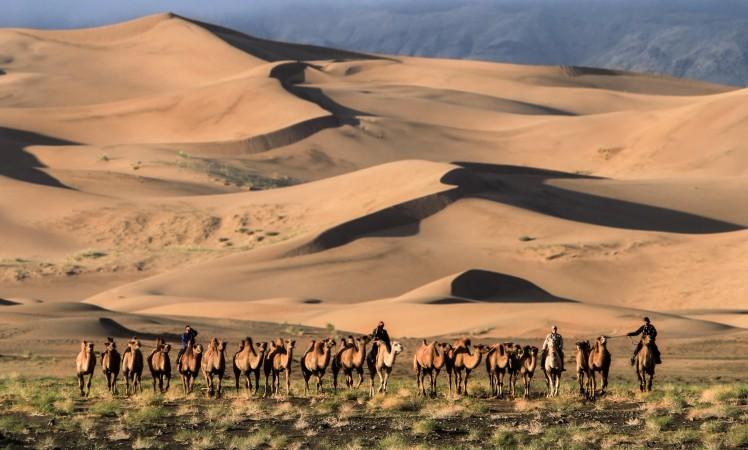
Hongor Els - © gather
Yol Valley (Yolyn Am)
Yol Valley, also known as Yolyn Am, is a deep and narrow gorge in the Gurvan Saikhan Mountains. This stunning natural wonder is renowned for its year-round ice field, a rare sight in the desert.
Geography and Climate:
The valley's high walls create a microclimate that allows ice to persist even during the summer months. This unique feature, combined with the valley's lush vegetation, makes it a cool and refreshing retreat from the desert heat.
Hiking Trails and Wildlife Spotting:
Yol Valley offers several hiking trails that vary in difficulty, allowing visitors to explore its breathtaking landscapes at their own pace. Along the way, you may spot various wildlife, including ibex, argali sheep, and lammergeiers (bearded vultures).
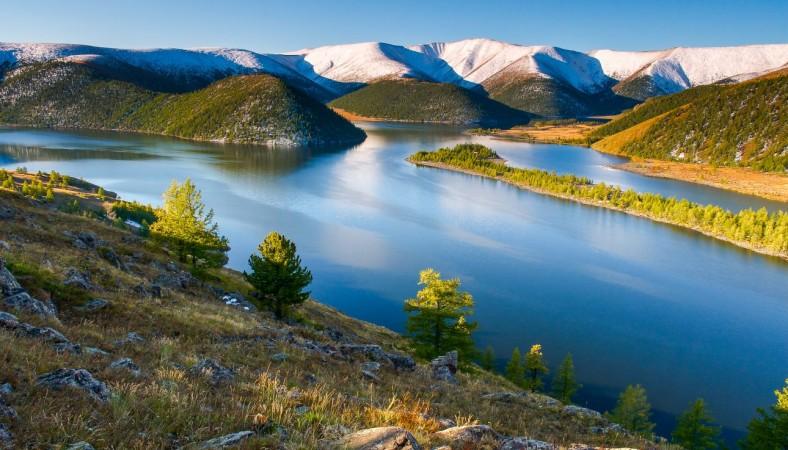
Yol Valley - © Flickr
Bayanzag (Flaming Cliffs)
Bayanzag, famously known as the Flaming Cliffs, is a site of immense paleontological significance. It was here that Roy Chapman Andrews discovered the first dinosaur eggs in the 1920s.
Historical Importance:
The Flaming Cliffs have yielded numerous dinosaur fossils, providing invaluable insights into the prehistoric life that once roamed the Gobi Desert. The striking red sandstone cliffs, especially at sunset, resemble a fiery blaze, hence their name.
Best Time for Photography:
For photographers, the best time to capture the Flaming Cliffs is during sunset when the cliffs glow with a deep, rich hue, creating a surreal and magical atmosphere.

Flaming Cliffs - © Reddit
Khermen Tsav Canyon
Khermen Tsav Canyon, often referred to as Mongolia's Grand Canyon, is a geological wonder that captivates visitors with its dramatic landscapes.
Geological Formations and Fossilized Remains:
The canyon, formed by millions of years of erosion, boasts intricate rock formations and fossilized remains of ancient animals and plants. This area is a treasure trove for geologists and paleontologists, offering a glimpse into the Earth's distant past.
Eco-tourism Opportunities and Guided Tours:
Khermen Tsav Canyon is best explored with a knowledgeable guide who can provide insights into the canyon's geological history and its unique ecosystem. Eco-tours often include hiking, photography, and opportunities to learn about the local flora and fauna.
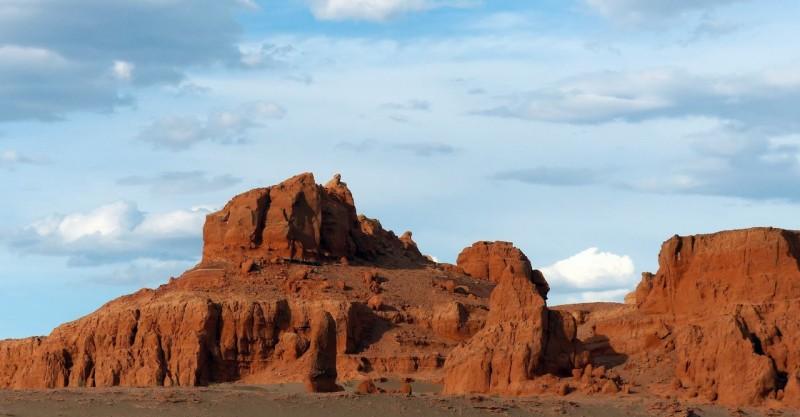
Khermen Tsav Canyon - © Shutterstock
Must-Try Experiences and Activities in Gobi Desert
Staying in a Traditional Ger Camp
Immerse yourself in the nomadic lifestyle by staying in a traditional ger camp. Gers, also known as yurts, are portable, round tents used by Mongolian nomads for centuries. They are designed to withstand the harsh conditions of the Gobi Desert while providing comfort and warmth. Ger camps provide a unique combination of tradition and modernity. Each ger is typically equipped with basic amenities such as beds, a wood-burning stove for heating, and simple furniture. Some camps also provide electricity and shared bathroom facilities.
Cultural Immersion:
Staying at a ger camp allows you to meet local nomads and learn about their way of life. Participate in daily activities such as herding livestock, milking yaks, or making traditional dairy products like airag (fermented mare's milk). These events provide vital insight into the Gobi people's tenacity and creativity.
While ger camps are rustic, many provide a surprising level of comfort. You can expect hearty meals featuring local cuisine, often prepared using ingredients sourced from the surrounding area. Some camps even offer traditional music performances and educational workshops on Mongolian culture.
Camel Trekking and Wildlife Watching
Exploring the Gobi Desert on the back of a Bactrian camel is an unforgettable experience. These sturdy animals, with their distinctive two humps, are perfectly adapted to the harsh desert environment.
Best Routes for Camel Trekking:
Several routes offer stunning views and diverse landscapes. Popular treks include journeys through the Hongor Els sand dunes, along the Khongoryn River, and across the vast expanses of the Gobi Gurvansaikhan National Park.
Key Wildlife Species:
The Gobi Desert is home to an array of unique wildlife. Keep an eye out for the Gobi bear, one of the rarest bears in the world, as well as wild Bactrian camels, snow leopards, and ibex. Bird enthusiasts will also enjoy spotting lammergeiers, golden eagles, and various migratory species.
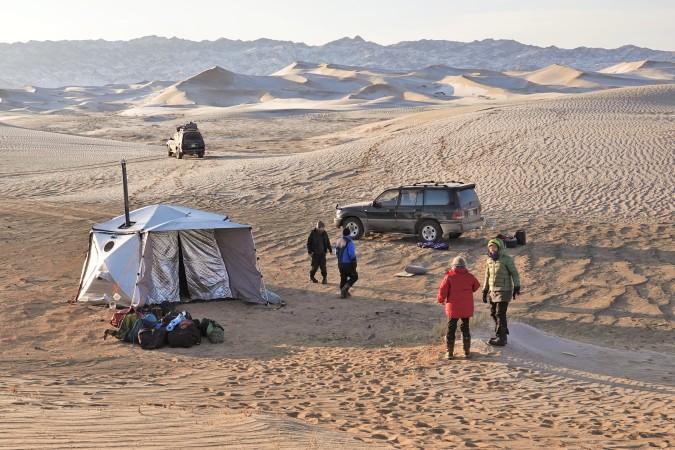
Ger Camp in Gobi Desert - © South China Morning
Hiking and Adventure Tours
For those seeking adventure, the Gobi Desert offers numerous hiking trails and off-road tours that cater to all levels of experience.
Recommended Hiking Trails:
- Yol Valley: A moderate hike through a narrow gorge with stunning ice formations.
- Khongoryn Els: A challenging trek up the tallest sand dunes in Mongolia, offering panoramic views of the desert.
- Tugrugiin Shiree: Known for its paleontological significance, this site features fossilized dinosaur skeletons and footprints.
Adventure Tours:
Join Tweet Tours’ guided off-road tour to explore the remote corners of the Gobi. Our tours often include rock climbing, fossil hunting, and visits to hidden oases. Experienced guides share their knowledge of the desert's geology, history, and ecology, enriching your adventure with fascinating insights.
Best Time to Visit
The Gobi Desert's climate is extreme, with hot summers and frigid winters. To get the most of your trip, schedule it during the shoulder seasons.
- Spring (April to May): Mild temperatures and blooming wildflowers make this a pleasant time to visit.
- Summer (June to August): While temperatures can soar, summer is ideal for experiencing the full vibrancy of the desert. Expect occasional sandstorms and dramatic sunsets.
- Autumn (September to October): Cooler temperatures and fewer tourists make autumn an excellent choice for travel. The landscape takes on a golden hue, creating perfect conditions for photography.
- Winter (November to March): The Gobi's harsh winter is not for the faint-hearted, but it offers a unique, tranquil beauty and the chance to see the desert covered in snow.
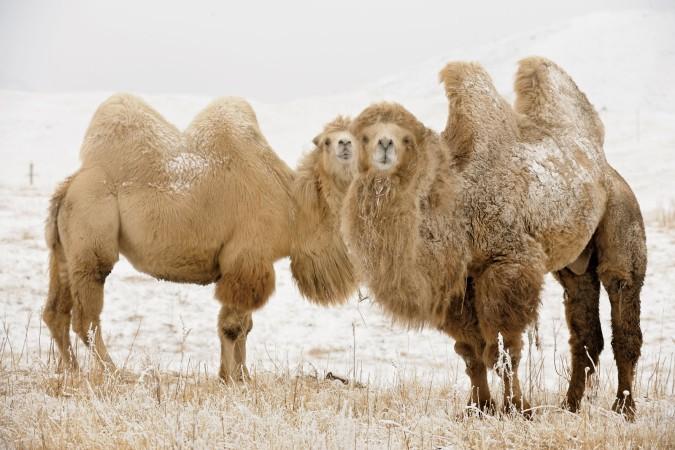
Camels during winter - © National Geographic
Insider Tips and Recommendations
Packing Essentials
When preparing for your journey into the heart of the Gobi Desert, packing wisely can make all the difference between an enjoyable adventure and a challenging expedition. Ensure your suitcase includes weather-appropriate attire, as temperatures in the desert can vary significantly between day and night. Lightweight, breathable fabrics are ideal for the daytime heat, while layers and a warm jacket are essential for chilly evenings under the vast Mongolian sky. Travel accessories are equally crucial. Don't forget to pack a reliable camera to capture the awe-inspiring landscapes and wildlife encounters. Sunscreen is a must to protect against the intense desert sun, and staying hydrated is paramount—carry a refillable water bottle to ensure you have access to clean drinking water throughout your journey.
Health and Safety
Exploring the Gobi Desert offers unparalleled adventure, but it's essential to prioritize safety, especially in extreme weather conditions. The desert climate can be harsh, with scorching daytime temperatures and cold nights. Be sure to pack adequate sun protection, including sunglasses and a wide-brimmed hat, and wear sturdy shoes to navigate the rugged terrain comfortably.
Local Etiquette and Cultural Sensitivity
Respecting local customs and traditions is fundamental when visiting the Gobi Desert and interacting with its inhabitants. Mongolia's nomadic culture is rich in history and tradition—visiting nomadic families offers a unique glimpse into their way of life. Remember to observe cultural etiquette, such as removing your shoes before entering a ger (traditional Mongolian dwelling), and participating respectfully in local customs and rituals.
Understanding and appreciating the nomadic lifestyle enriches your experience in the Gobi Desert. Learn a few basic phrases in Mongolian, the country's official language, to connect more deeply with locals and show appreciation for their hospitality.
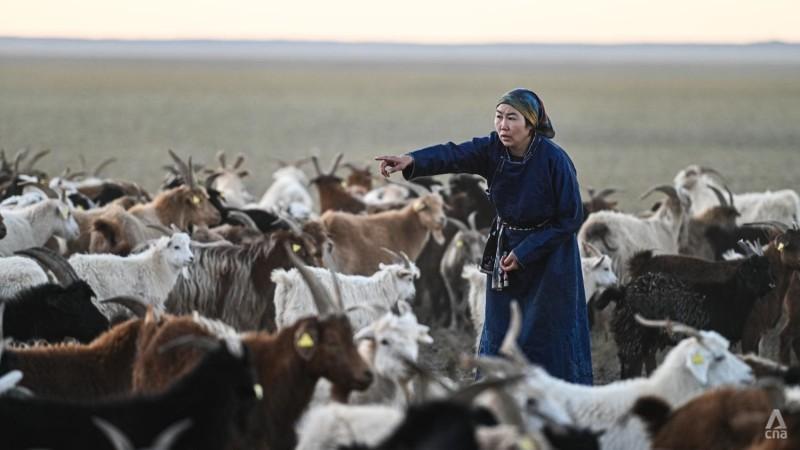
Mongolian Herder - © VietnamNet
Conclusion
The Gobi Desert beckons adventurers with its unparalleled natural beauty and rich cultural heritage. From the towering sand dunes of Hongor Els to the dramatic cliffs of Bayanzag, every corner of this vast desert tells a story of ancient landscapes and resilient communities. Whether you're marveling at the elusive wildlife in Gobi Gurvansaikhan National Park or savoring the tranquility of Yol Valley, each moment in the Gobi Desert promises adventure and discovery.
Armed with insights into packing essentials, health precautions, and cultural etiquette, it is the time to plan your next expedition to Mongolia with Tweet Tours’ team of experienced local guides. Embrace the spirit of exploration, and let the Gobi Desert captivate your senses with its boundless horizons and timeless allure. Discover this enchanting landscape for yourself, and embark on a journey that promises to inspire and invigorate.
Articles for you

Experience Aboard The RV Indochine II - A Mekong Cruise With Tweet World Travel
The RV Indochine II is a luxury river cruise ship, offering an unforgettable journey through many attractions along the Mekong River. Built in 2017, this upscale vessel combines colonial elegance with modern conveniences to create a comfortable yet stylish environment for its crew and passengers. The ship’s intimate size makes it ideal for those seeking a more personal cruising experience while exploring Vietnam and Cambodia rich culture, scenery, and heritage. Whether you're gazing at the landscape from your private balcony or enjoying authentic local cuisine, RV Indochine II promises an exotic adventure like no other.

Witness Stilt Fishing In Sri Lanka: An Eco-Tourism Experience
Sri Lanka, renowned for its stunning beaches and rich cultural heritage, harbors a unique tradition that has captivated travelers for centuries: stilt fishing. This ancient practice, passed down through generations of coastal communities, blends artistry with necessity, offering a glimpse into a way of life intimately connected to the island's coastal rhythms. Stilt fishing in Sri Lanka isn't merely a means to catch fish; it's a cultural emblem, embodying the resilience and ingenuity of Sri Lanka's fishing communities.

Make Your Trip Stress-Free With The Tweet Trip App
Embark on your next adventure with confidence by downloading the Tweet Trip App, available for both iOS and Android. This essential travel companion allows you to view your detailed itinerary, stay connected with your tour guide and fellow travelers, receive real-time updates, and provide feedback effortlessly. With features like in-app messaging, emergency assistance, and location sharing, the Tweet Trip App ensures you travel smarter, stay connected, and enjoy a seamless, worry-free journey. Get started today and make the most of your travel experience with Tweet World Travel.

Pedal Through Paradise: Unveiling Cambodia's Hidden Gems on Two Wheels
The gentle whir of bicycle wheels mingles with the distant chants of monks as you glide past emerald rice paddies stretching to the horizon. This is Cambodia - a sensory explosion waiting to be experienced on two wheels. At Tweet Tours, we believe there's no better way to immerse yourself in the Kingdom of Wonder than by bicycle.
Cambodia isn't just a destination; it's a living, breathing tapestry of ancient wonders, natural beauty, and vibrant culture. Our carefully crafted cycling tours take you beyond the typical tourist haunts, offering a unique perspective on this captivating country. Ready to clip in and discover the magic of Cambodia? Let's ride!

Trekking in the Himalayas: A Journey Through Nepal's Majestic Peaks
The Himalayas rise from the earth like colossal guardians, their snow-capped peaks piercing the sky in a display of nature's raw power and beauty. Nepal, nestled at the heart of this mountain range, serves as the gateway to some of the most breathtaking trekking experiences on the planet. Here, the air is crisp and thin, filled with the promise of adventure and the whispers of ancient tales.
With Tweet Tours, as you set foot on these hallowed trails, you're not just a traveler - you're a modern-day explorer, following in the footsteps of legendary mountaineers and age-old traders. Each step takes you further into a world where nature reigns supreme and human resilience is tested against the backdrop of some of the world's highest peaks.
From the moment your boots touch the ground in Kathmandu, you'll feel the pull of the mountains. The bustling streets of the capital, with their sensory overload of sights, sounds, and smells, soon give way to serene mountain paths where the only soundtrack is the crunch of gravel underfoot and the distant tinkling of yak bells.

Exploring Mui Ne's Wonders: Unique Attractions & Local Dishes
Nestled along the southeastern coast of Vietnam, Mui Ne emerges as a captivating gem, blending natural wonders with cultural richness. Renowned for its stunning landscapes and unique attractions, Mui Ne beckons travelers seeking both relaxation and adventure in equal measure. Mui Ne's renowned beach dunes, bustling fishing towns, and excellent local food await exploration at every turn.
The allure of Mui Ne lies not only in its pristine beaches and crystal-clear waters but also in its diverse range of activities catering to every traveler's whims. Whether you're drawn to thrilling water sports like kitesurfing and windsurfing on its dynamic shores or seeking tranquility amidst the picturesque Fairy Stream, Mui Ne promises an unforgettable journey filled with discovery.
